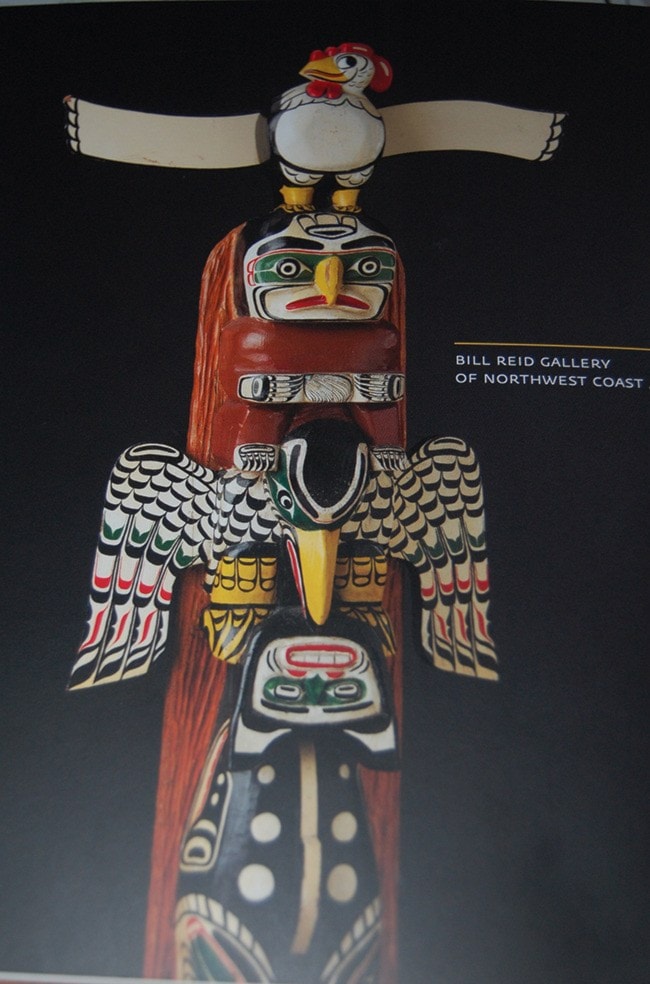A NEW book shows the humour in Northwest native art, something that has existed for years, even since prehistoric times, but seldom seen or acknowledged.
Carrying On “irregardless”: Humour in Contemporary Northwest Coast Art shows colourful works in which the artists make fun of themselves and have fun with stereotypes.
That includes local artist Tahltan-Tlingit artist Dempsey Bob and Nisga’a artist Norman Tait, who was born in Kincolith.
Martine Reid, who edited the book and wrote some of the text said the idea for the book had been maturing in her mind for quite a while.
“I lived with Bill Reid for 25 years and he had a very wicked sense of humour,” she said about her late husband and world renowned Haida artist.
“Whenever there was an occasion for laughter, it was always there. It was never missed.”
She said they talked about visual puns, and to understand them, you have to know the language and humour is not always obvious.
Humour had not been seen in northwest coast art and that was because in the 19th century, the people who were documenting the culture felt it was a dying culture and laughter was not part of their mandate, she said.
Looking at books by archaeologists or at prehistoric art, everything is serious.
Her friend, Peter Morin, a Tahltan standup comedian, writer, curator and artist thought her idea for the book was a great idea.
When they went looking for humour in art at museums, people didn’t know what they was talking about.
“He was saying to everyone ‘I’m looking for the funny,’ ‘will you show me the funny on the northwest coast,’ and they really did not know what he was looking for,” said Reid.
They did find a stone bowl from prehistoric time with a smile on it.
“It’s a prehistoric 3,000-year-old smile,” she said, adding that although nothing is known about the piece, except that it was done by an unknown Coast Salish artist, it shows that laughter has always been in the art.
“There is a great diversity of how artists construct stereotypes or break down stereotypes by taking them back and sending them back to the white people almost as a weapon.
“They were claiming the stereotypes, some had been harmful and they were presenting them in a position of power and more or less sending them back,” she said.
The books shows Dempsey Bob’s work as copied by Skeena Reece to make fun of Emily Carr copying native art.
Pieces like Gwaai Edenshaw’s Bear Bum or Bill Reid’s Raven Skiing are done to please the artist and while funny works aren’t considered seriously, she would like to change that.
Art Wilson’s Marshmallow Wars is the first time marshmallows made it into the art world and is about a true story, she said.
Pop art shows up in Sonny Assu’s work Coke Salish, with a Coca-cola sign that reads Coast Salish and Shawn Hunt’s Trickster, an Andy Warhol parody of a raven standing on a Campbell’s soup can.
Ellen Neel’s Totem Pole, pictured on the back of the book, shows a chicken posing like a thunderbird on top and the raven, the trickster, looking down instead of ahead.
“I hope that they will have the further curiosity to look at the work with a different gaze from now on and try to see what is being hidden and what is being said,” said Reid about what she hopes readers get from the book.
“When do you hear people laughing in galleries? That’s what we said: we want to hear people laugh,” she said.
